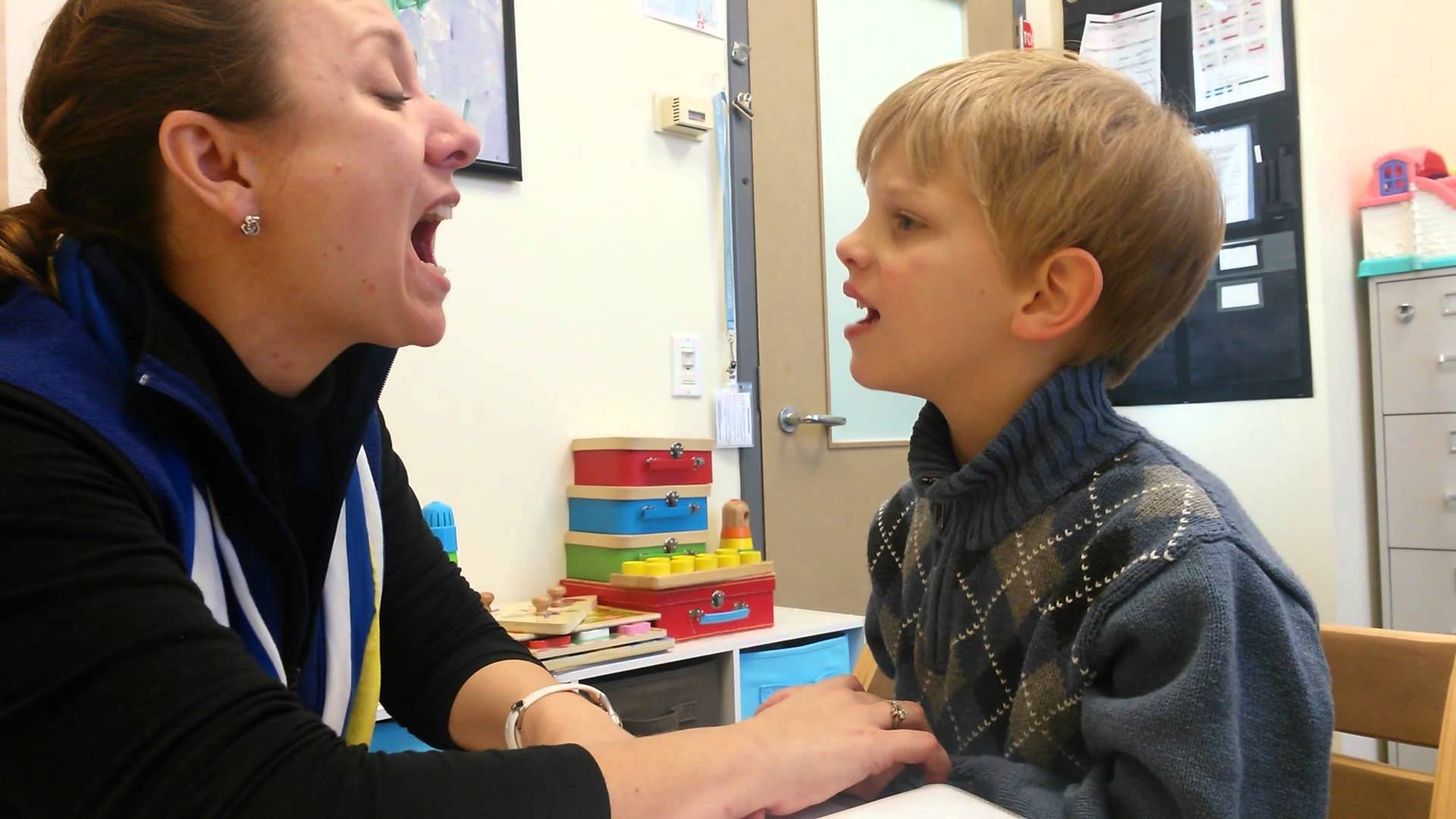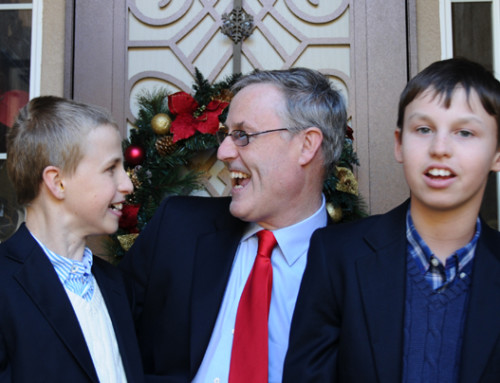Speech and language therapy interventions for children with primary speech and/or language disorders
Background
Description of the condition
Speech and/or language disorders are amongst the most common developmental difficulties in childhood. Such difficulties are termed ‘primary’ if they have no known aetiology, and ‘secondary’ if they are caused by another condition such as autism, hearing impairment, general developmental difficulties, behavioural or emotional difficulties or neurological impairment (Stark 1981; Plante 1998). Although some children have either a primary speech disorder but not a language disorder, or vice versa, these disorders commonly overlap. In addition, interventions in both cases share commonalities; for example, focusing on various elements of the language system and common underlying processes such as attention and listening. Therefore, in both research and intervention, it is difficult to tease speech and language disorders apart.
It is thought that approximately 5% to 8% of children may have difficulties with speech and/or language (Boyle 1996; Tomblin 1997), of which a significant proportion will have ‘primary’ speech and/or language disorders. The presentation of primary speech and/or language disorders can vary considerably between individuals in terms of severity, pattern of impairment and degree of comorbidity (Bishop 1997). Questions have been raised in recent years as to how ‘specific’ to speech and language these problems are, but this distinction between primary and secondary difficulties remains clinically useful and is one commonly reported in the literature (Bishop 1997; Leonard 2014; Reilly 2014 and associated papers).
Given the heterogeneity of presentation, there are inconsistencies in terminology for speech and/or language disorders with no agreed diagnostic label. The term ‘language disorder’, as used in the latest edition of the Diagnostic and Statistical Manual of Mental Disorders (DSM-5 2013), has been found to be problematic, as it identifies too broad a range of conditions (Bishop 2014). The term ‘specific language impairment’ is the most commonly-used diagnostic label, ‘specific’ referring to the idiopathic nature of the condition. However, this term is problematic in that it suggests difficulties are specific to language only. Disagreements about terminology impede research and clinical processes as well as access to services (Reilly 2014), and differences in diagnostic categories/labels have implications for the current review, meaning that a wide range of different terms are expected across the literature. For the purpose of the current review, however, impairments in speech and language will be referred to as ‘speech and/or language disorders’, reflecting the possibility that children may have impairment in both or either of these areas.
Primary speech and/or language disorders can affect one or several of the following areas: phonology (the pattern of sounds used by the child), vocabulary (the words that a child can say and understand), grammar (the way that language is constructed), morphology (meaningful changes to words to signal tense, number, etc.), narrative skills (the ability to relate a sequence of ideas), and pragmatic language (the ability to understand the intended meaning of others and to communicate effectively in conversation (Adams 2012)). As regards the current review, the majority of these affected areas may be categorised as a ‘language’ outcome, with ‘phonology’ categorised as a separate outcome. It is unclear whether primary speech and/or language disorders represent varying levels of a single condition, or a number of different conditions with diverse aetiologies but similar presenting patterns (Law 1998; Tomblin 2004).
There is little consensus on the aetiology of primary speech and/or language disorders but there is evidence of a number of associated risk factors, including medical difficulties (for example, being born small for gestational age), and motor skill deficits (Hill 2001). There is increasing evidence of genetic underpinnings of speech and/or language disorders (SLI Consortium 2004; Bishop 2006); the links appear to be stronger for expressive language difficulties than receptive language difficulties (Kovas 2005). There remain questions as to the nature of the role of environmental factors, whether distal (for example, socioeconomic status and maternal education) or proximal (for example, parent-child and peer-peer interaction and relationships) as causes of primary disorder, or whether these are factors affecting outcomes (mediators). Twin studies have so far suggested that heredity plays an increasingly strong role, especially as the child moves through primary school and especially for less socially-disadvantaged children, but that environmental factors can have a relatively important role to play in the early years, and that marked language difficulties between higher and lower social groups are identifiable from very early on in children’s development and tend to persist (Bradbury 2015). It is likely that these risk factors act in a cumulative fashion to increase the severity of the presenting disorder (Aram 1980) and are relevant when it comes to affecting access to educational and therapeutic resources.
Primary speech and/or language disorders can have far-reaching implications for the child and his/her parent or carer in both the short and the longer term. Studies indicate that they may have adverse effects upon school achievement (Aram 1984; Baker 1987; Bishop 1990; Catts 1993; Tallal 1997). It has recently been reported that “approximately two children in every class of 30 pupils will experience language disorder severe enough to hinder academic progress” (Norbury 2016). They may also be associated with comorbid social, emotional and behavioural problems (Huntley 1988; Rice 1991; Rutter 1992; Stothard 1998; Cohen 2000; Conti-Ramsden 2004), and with peer interaction difficulties (Murphy 2014). Children with primary speech and/or language disorders can also have long-term difficulties that persist to adolescence and beyond (Rescorla 1990; Haynes 1991; Johnson 1999), with some 30% to 60% experiencing continuing problems in reading and spelling, and with early difficulties predicting adult outcomes in literacy, mental health and employability (Law 2009a).
Description of the intervention
Interventions for children identified as having primary speech and/or language disorders include a variety of practices (methods, approaches, programmes) that are specifically designed to promote speech and/or language development or to remove barriers to participation in society that arise from a child’s difficulties, or both. Assessment of eligibility for intervention includes a combination of standardised assessment (where available), observations of linguistic and communicative performance, and professional judgement. Interventions are usually time limited and can be delivered by any professional group, but usually involve input from language specialists, most notably speech and language therapists/pathologists. The criteria for inclusion in such interventions commonly includes some reference to the specific or the primary nature of the language difficulty experienced by the children concerned — that is, it is not associated with low non-verbal performance — and this allows for a focus on speech and language characteristics rather than a broader range of skills.
Interventions for children with speech and/or language disorders may be carried out directly or indirectly, and in a range of settings, such as the home, healthcare service provision, early years setting (nursery/school), school or private practices, by the specialist professionals themselves or through proxies such as parents, teachers or teaching assistants. There are also examples where interventions are delivered through peers in school.
Direct interventions focus on the treatment of the child individually, or within a group, depending on the age and needs of the children requiring therapy and the facilities available. In group treatments, it is thought that children benefit from the opportunities to interact and learn from one another.
Indirect interventions are often perceived to be more naturalistic in approach, allowing adults that are already within the child’s environment to facilitate communication. Traditionally, these approaches create an optimum communicative environment for the child by promoting positive parent-child interaction. Indirect approaches are increasingly being employed within a range of settings where speech and language therapists train professionals and carers who work with the children, and provide programmes or advice on how to maximise the child’s communicative environment and enhance communicative attempts.
Parents are often actively engaged in delivering interventions to younger children but tend to be less actively involved in the administration of the intervention as the child gets older. Many intervention models target behaviours using play to enhance generalisation. Interventions for children with primary speech and/or language disorders would, in many cases, meet the criteria for being a complex intervention (Craig 2008), being made up of a number of elements that vary according to both the theoretical assumptions behind the intervention and the perceived needs of the child.
The majority of interventions involve the training of specific behaviours (speech sounds, vocabulary, sentence structures) accompanied by reinforcement. Most commonly this involves rewards of some form (stickers, tokens and, most often, praise). The assumption behind overt behavioural techniques is that language or speech can explicitly be taught and that gaps in the child’s skills can be filled by instruction. In the past twenty years, most therapy has shifted from explicit training paradigms to those based on social learning theory, which assumes that children learn most effectively if they are trained within a social context (Miller 2011).
As the child gets older the emphasis of interventions shifts towards a more functional approach, whereby children are taught skills that are most useful for them at that moment. This functional shift often involves a move from explicit instruction to a more ‘meta-cognitive’ approach whereby the therapist will encourage the child to reflect on what they hear and then adopt it into their own repertoire. Often the therapist will present the child with alternatives and encourage them to make judgements based on their intrinsic grammatical or phonological knowledge. It is assumed that the process of making a judgement increases the child’s chances of modifying their language and/or speech performance. ‘Constructivist’ or usage-based explanations represent a new direction from a linguistic perspective (Childers 2002; Riches 2013).
Speech and/or language therapy interventions vary in duration and intensity depending on the resources available, the perceived needs of the child, and policies of different speech and/or language therapy and educational services. The intensity and the duration of typical therapy interventions have yet to be evaluated systematically (Warren 2007), although both of these issues have been raised as potentially important determinants of outcomes (Law 2000; Hoffman 2009). In practice, some interventions are of short duration and relatively low intensity, for instance, six hours over a year. It is common for these short durations of intervention to be offered in ‘blocks’ of treatment, commonly once a week for a six-week period. This may then be repeated depending on a child’s progress — although there is no specific evidence underpinning this approach. In other instances, especially in schools, interventions may be delivered on a daily basis over a longer period. On balance, however, most speech and/or language interventions tend to be relatively short (less than 20 hours in total).
Treatment goals vary considerably depending on the perceived difficulty that the child is experiencing. While the focus is often on aspects of expressive language, many studies also focus on receptive language ability or verbal comprehension, and in the last decade there has been an increasing emphasis on pragmatic language difficulties (the way children use language with others). Treatment goals may focus on specific aspects of language or address a number of aspects of language in combination. For many speech and language therapists, the child’s social skills and their ability to integrate with peers and negotiate the curriculum are key outcomes.
There have been a number of recent developments in intervention for children with primary speech and/or language disorders, listed as follows.
- An increased use of computerised intervention packages, and most recently ‘apps’ (short for computerised ‘application’), in education.
- A move towards meta-cognitive or meta-linguistic interventions, especially for older children and often with a view to enhancing comprehension. These emphasise the child making judgements based on their underlying linguistic knowledge, and often use other, readily recognisable supports (that is, colour and shape).
- Increased emphasis on universal or public health interventions whereby speech, and especially language, interventions are provided for whole populations using key messaging to parents and training public health professionals (for example, Health Visitors in the UK) (Law 2013).
- Increased focus on comorbidity, for example, the relationship between language skills and socio-emotional skills, and whether interventions addressing the former may have outcomes relevant to the latter (Law 2009b).
How the intervention might work
There are some explicit elements in the mechanism of change that can be identified and that are likely to help identify the ‘active ingredients’ of any intervention both in terms of immediate and longer-term benefits.
The delivery agent
Interventions, especially those for younger children, often involve the child’s parents or caregivers. This creates an optimum communicative environment for the child by promoting positive parent-child interaction. It can increase parental knowledge about speech and language development, including how they might target their child’s language development at home. It also helps them provide ‘carry over’ or generalisation at home and then ‘maintenance’ over time. Similarly, training teachers and teaching assistants to carry out the intervention tasks has the potential to widen the child’s opportunities to practice new skills. Targeted interventions are likely to be delivered by specialist practitioners such as a speech and language therapist/pathologist. Evidence does suggest that it may be less the category of person that is key here than the commitment of parents and the experience and training of the practitioner that makes the difference. This may be especially true for aspects of grammar and phonological development, where the specialist skills of the speech and language therapist/pathologists are likely to be of paramount importance.
The context of delivery
Intervention for children with speech and/or language disorder is carried out in a number of different contexts: the home, the clinic, the nursery/early years setting/kindergarten, the school, etc. Many of the interventions reported in earlier studies were ‘clinical’ in focus, in the sense that they were carried out in a clinic separate from school, perhaps with the parents in attendance or actively engaged. In practice, while this may still be true for many children when they first encounter specialist services, this type of ‘pull out’ model is much less common, and children are seen within settings where they spend most of their time. The rationale is that the context in which children learn language is critical for their outcomes and that maximising the most appropriate sort of intervention in the right environment is more likely to be effective in the long run than very specific intervention led solely by an adult ‘expert’. That said, there may well be a case for this more specific, one-to-one intervention, especially with children who have more pronounced problems.
In recent years there has been an increased use of computer-delivered intervention, effectively a mediated version of the adult ‘expert’ model. Computerised interventions work by providing very explicit links between the stimulus and the reward within the context of the game format in which they are presented. Due to their similarity to non-educational computer games with which children are often familiar, these interventions are considered to have a positive effect on a child’s motivation and engagement. Such approaches have been used widely where there has been limited access to specialist provision.
The intervention technique
Speech and language therapists commonly use a range of behavioural techniques, including imitation, modelling, repetition and extension. These draw the child’s attention to the structure and the content of the speech or language input (or both), and the input is often presented at a developmental level a little ahead of that of the child. Stimuli are commonly repeated many times to draw the child’s attention to the correct form. It is assumed that practice is one of the cornerstones of reinforcement and that repetition makes it easy for the child to learn what they have not otherwise acquired. Key to all intervention is building the child’s motivation to speak.
Children with speech and/or language disorder are often described as having poor auditory skills. There has been an ongoing discussion as to whether the child’s auditory skills are the key underlying problem or whether the breakdown is primarily linguistic in nature (Bishop 2005), and there is individual variability in auditory processing skills, which must be recognised prior to intervention delivery in order to personalise intervention to individual strengths and weaknesses. Nevertheless, activities designed to heighten the child’s awareness of their auditory environment are common components of most interventions and may be a key ingredient in effective interventions.
Children with speech and/or language disorders are often thought to have strengths in their visual, relative to their auditory, processing and for this reason their visual skills are used to compensate for their other difficulties. Within the child’s most common contexts for learning, the classroom and the home environment, information is often presented visually (NCLD 1999). In speech and language interventions, widespread use is made of pictorial support materials and visual timetables to help children make better use of auditory material. In some cases, interventions are supported by manual signing systems (for example, Makaton or Paget Gorman).
The dosage
Frequency, intensity and duration of interventions vary considerably. It may be that the amount of intervention is key to an intervention’s success; however, variability between interventions and outcomes means it is difficult to make recommendations about optimal dosage (Zeng 2012). It may be that for some outcomes that are measured continuously, such as vocabulary, there may be a simple dosage or response effect — the more intervention received, the greater the vocabulary learned — but for others, such as specific grammatical structures where outcomes are more focussed, intensity may be more functionally important than duration. Care has to be taken in adopting specific programmes to retain the recommended dosage, and to not assume that reducing the amount of intervention for pragmatic, cost-related reasons is likely to lead to the same effects.
The outcome
On the one hand, the intervention is most likely to ‘work’ if the outcome directly reflects the intervention that the child receives. On the other, it is often considered more desirable and indeed more robust if effects can be demonstrated on standardised omnibus language tests. Consequently, an intervention may be said to work more effectively on very specific outcomes and may work less effectively on population, standard, norm-referenced measures, which have commonly not been designed to capture change.
Adverse effects
There are no known adverse effects of the interventions concerned. It is important to acknowledge that there are potential implications in terms of raised anxiety in parents who are made aware that there is concern about their child’s speech and/or language development. There could also be risks associated with children being taken out of their routine schooling (with resultant reduction in exposure to the curriculum) to attend specialist sessions if the sessions are found to be of uncertain benefit.
Why it is important to do this review
This protocol updates a previously published systematic review (Law 2003a), but is substantively different in that it excludes studies comparing interventions with alternative interventions — so called ‘head-to-head’ studies — so that this review will only report on treatments compared to no treatment or to a placebo. This has been done to aid interpretation of the results. An array of different alternative interventions, where there is rarely more than one version of any given alternative, make it difficult to report outcomes in a coherent fashion. Studies with alternative intervention comparison groups are often very different in terms of the treatment received. This increases heterogeneity and makes the combination of effect sizes problematic. Each alternative intervention comparison would need to be reported separately. It may be that in future iterations of this review, or in other reviews, specific head-to head comparisons do become feasible.
There is a strong case for retaining the focus on interventions that include a broad range of language functions across childhood, to act as a benchmark in the field, although care needs to be taken to test for compatibility.
Previous reviews have largely been narrative in nature and thus prone to bias (Goldstein 1991; Enderby 1996; Law 1997; McLean 1997; Gallagher 1998; Guralnick 1998; Olswang 1998; Yoder 2002; McCauley 2006; Leonard 2014). Two systematic reviews (Nye 1987; Law 1998) were published prior to the publication of the first Cochrane review in the field (Law 2003a). A number have followed it, covering specific subpopulations or practice contexts; for example, interventions for preschool children only (Schooling 2010), educational contexts (Cirrin 2008), receptive language impairments (Boyle 2010), parent-child interaction (Roberts 2011), grammatical development (Ebbels 2013), computerised interventions (Strong 2011), late talkers (Cable 2010), language or literacy (Reese 2010), and vocabulary learning in typically developing children (Marulis 2010).
The original Cochrane review triggered a number of discussions about whether the approach employed in the review was the most effective, given the constraints associated with the subject domain and effectively captured in the Medical Research Council (MRC) guidelines (Craig 2008). (See Pring 2004; Johnston 2005; Law 2005a; Garrett 2006; Marshall 2011). While clinical guidelines to direct practice in speech and language therapy do exist (RCSLT 2005; Johnson 2006), there remains little in the way of specific guidance on what type of intervention to offer children with primary speech and language impairment. This review has the potential to help inform such guidance where evidence is both sufficiently robust and sufficiently strong to warrant such recommendations.







Leave A Comment